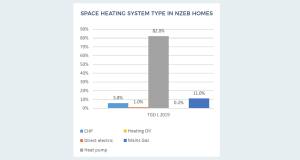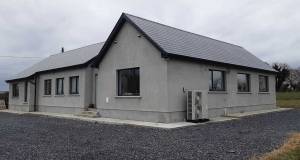
- Marketplace
- Posted
Meet nZEB with the new Amvic 300 ICF System
Leading insulated concrete formwork (ICF) manufacturer Amvic Ireland says that its new Amvic 300 ICF system contributes significantly to achieving the nZEB standard in new buildings, following a fresh energy assessment of some of the company’s previous projects.
This article was originally published in issue 27 of Passive House Plus magazine. Want immediate access to all back issues and exclusive extra content? Click here to subscribe for as little as €10, or click here to receive the next issue free of charge
Pat Martin of Amvic Ireland told Passive House Plus: “We took a project that we had finished last year which featured our old 280 ICF system and reassessed it in DEAP with the standard thermal performance specs of our new 300 ICF system. We found that using our new block, it was easy to make the project nZEB compliant.”
From the end of 2020, all new Irish dwellings will have to meet the nZEB (nearly zero energy building) standard, which will require that new homes have an energy performance coefficient (EPC) of 0.3 or less in DEAP.
The Amvic 300 ICF system delivers a U-value of 0.2 as standard, a 15% improvement over the company’s previous block. The installation of a typical insulated gypsum board on the inside brings the wall U-value down to 0.18 or lower.
Pat Martin added that the system also delivers airtightness of less than 2.0 m3/hr/m2 as standard, and that the company can also meet passive house requirements if desired by the client.
Amvic has also announced the launch of its new insulated cavity closer system, which helps an Amvic ICF wall deliver a typical thermal bridging Y-value of 0.02 or lower. “This means that walls built using the Amvic 300 ICF System form the basis of an nZEB compliant house,” he said.
Recent testing of sound resistance on a scheme using the new Amvic 300 ICF System in party walls also demonstrated it to have a sound reduction performance of 58-60 dBa, well in excess of building regulation requirements.







